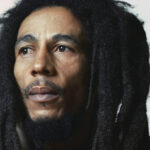The Doobie Brothers’ history is essentially a tale of two distinct musical chapters, defined by the presence and absence of Michael McDonald. Emerging from a post-Woodstock vibe, the initial iteration of the band was a collective of jam enthusiasts, deeply rooted in the sounds of the Grateful Dead, country rock’s twang, biker boogie rhythms, and classic three-chord guitar anthems. The arrival of Steely Dan alumnus Michael McDonald in 1976 marked a significant shift. His sophisticated pop sensibilities, coupled with his rich, soulful vocals, refined the Doobies’ raw edges and broadened their appeal.
Even before McDonald joined, the Doobie Brothers had already established themselves with a string of Top 40 hits, including a No. 1 single. However, their trajectory only ascended further with his inclusion. This exploration into the Top 10 Doobie Brothers Songs delves into both fascinating phases of their career, celebrating the best tracks from each era.
10. “It Keeps You Runnin'” (1976)
Following their 1975 Top 5 album Stampede, the Doobie Brothers were feeling the strain. Exhaustive touring and recording schedules had taken a toll, particularly on frontman Tom Johnston. Enter Michael McDonald, previously with Steely Dan, who was brought in to inject new energy. His impact was immediate and revitalizing. “It Keeps You Runnin’,” imbued with California funk, became his second Top 40 hit with the Doobie Brothers, showcasing the band’s evolving sound.
9. “Dependin’ On You” (1978)
After the release of Livin’ on the Fault Line in 1977, which was considered a somewhat underwhelming follow-up, the Doobie Brothers rebounded spectacularly a year later with their most commercially successful album. While McDonald’s influence is prominent on some of the album’s standout tracks (including numbers 5 and 1 on this list), not all hits were solely his creations. “Dependin’ on You,” a Top 30 single co-written by McDonald, features the vocals of founding member Patrick Simmons, demonstrating the band’s collaborative spirit and diverse talents.
8. “Take Me in Your Arms (Rock Me a Little While)” (1975)
This rendition of Kim Weston’s 1960s R&B Motown classic served as the successor to “Black Water,” the band’s initial No. 1 hit (featured at No. 3 on this list). While Michael McDonald wouldn’t join until the subsequent year, the Doobie Brothers effectively infused this cover with a soulful energy, hinting at the direction they would soon explore more fully.
7. “Minute by Minute” (1978)
Building on the monumental success of their No. 1 hit “What a Fool Believes,” the Doobie Brothers released the title track from their only album to reach the top of the charts. “Minute by Minute,” much like its predecessor, exemplifies laid-back blue-eyed soul at its finest. Beyond delivering a remarkable vocal performance, McDonald’s distinctive, buoyant organ playing is the driving force behind this smooth and sophisticated track.
6. “Takin’ It to the Streets” (1976)
Michael McDonald’s debut single with the Doobie Brothers heralded a transformative period for the group. Although founding member Tom Johnston remained involved for part of the recording sessions for the album that followed, “Takin’ It to the Streets” marked McDonald’s ascent towards becoming the band’s central figure. His soulful, raspy vocals on this Top 20 hit played a pivotal role in steering the band towards a more pronounced pop and R&B-influenced audience.
5. “China Grove” (1973)
The Doobie Brothers’ third album is replete with memorable guitar riffs, and “China Grove” stands out as the quintessential air-guitar anthem. This track, a cornerstone of their live performances, embodies the band at their most robust. “China Grove” is a riff-driven bar rocker, complete with powerful guitars, rolling piano accents, and an irresistible singalong chorus, representing the pinnacle of the Tom Johnston era’s raw energy.
4. “Listen to the Music” (1972)
The Doobie Brothers’ breakthrough into the Top 40, peaking at No. 11, introduced them as approachable 70s hippies, unburdened by the heavier aspects of the 60s counterculture. “Listen to the Music” is characterized by its gentle, shuffling rhythm, embodying California cool. Johnston’s relaxed vocals propel the song’s optimistic and celebratory message forward with an easygoing, steady tempo, setting the stage for the band’s evolution towards a more assertive sound on subsequent albums.
3. “Black Water” (1974)
Featuring an a cappella interlude, a viola solo, and a predominantly acoustic instrumentation, “Black Water” was an unlikely candidate for pop chart domination in 1974. Yet, remarkably, it soared to No. 1. Guitarist Patrick Simmons, who also lends his vocals to “Dependin’ on You” (No. 9 on this list), takes the lead on vocals, projecting an aura of serene enjoyment and laid-back vibes that resonated widely.
2. “Long Train Runnin'” (1973)
Recognized as one of the band’s signature songs, and boasting one of their most iconic guitar riffs, “Long Train Runnin'” was the first Doobie Brothers track to penetrate the Top 10. Reflecting the band’s early, pre-McDonald approach, the song originated from and retains the feel of an extended jam session amongst the band members. It organically evolved into one of their most enduring and beloved compositions, showcasing their instrumental prowess.
1. “What a Fool Believes” (1979)
After “What a Fool Believes” achieved No. 1 status and garnered well-deserved Grammy Awards, the Top 40 landscape experienced a discernible shift. McDonald’s distinctive soulful vocals and mellow keyboard textures, showcased at their absolute finest in this track, began to inspire imitation in other artists’ work (and even in advertising jingles). This cemented his legacy as one of the preeminent pop craftsmen of the era, and “What a Fool Believes” remains a defining song of the Doobie Brothers and the late 1970s.

